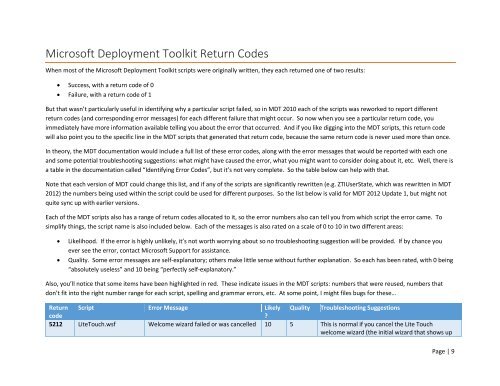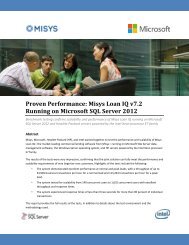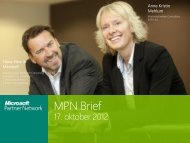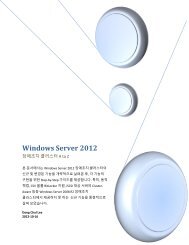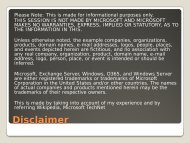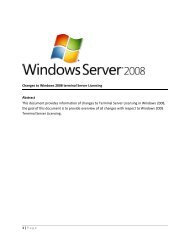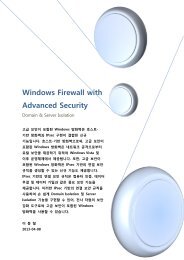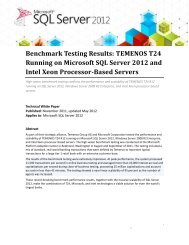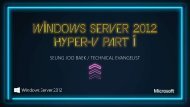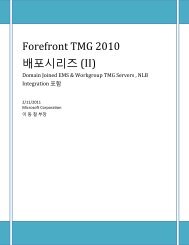Troubleshooting Windows Deployments 2012-09-11 - TechNet Blogs
Troubleshooting Windows Deployments 2012-09-11 - TechNet Blogs
Troubleshooting Windows Deployments 2012-09-11 - TechNet Blogs
You also want an ePaper? Increase the reach of your titles
YUMPU automatically turns print PDFs into web optimized ePapers that Google loves.
Microsoft Deployment Toolkit Return Codes<br />
When most of the Microsoft Deployment Toolkit scripts were originally written, they each returned one of two results:<br />
Success, with a return code of 0<br />
Failure, with a return code of 1<br />
But that wasn’t particularly useful in identifying why a particular script failed, so in MDT 2010 each of the scripts was reworked to report different<br />
return codes (and corresponding error messages) for each different failure that might occur. So now when you see a particular return code, you<br />
immediately have more information available telling you about the error that occurred. And if you like digging into the MDT scripts, this return code<br />
will also point you to the specific line in the MDT scripts that generated that return code, because the same return code is never used more than once.<br />
In theory, the MDT documentation would include a full list of these error codes, along with the error messages that would be reported with each one<br />
and some potential troubleshooting suggestions: what might have caused the error, what you might want to consider doing about it, etc. Well, there is<br />
a table in the documentation called “Identifying Error Codes”, but it’s not very complete. So the table below can help with that.<br />
Note that each version of MDT could change this list, and if any of the scripts are significantly rewritten (e.g. ZTIUserState, which was rewritten in MDT<br />
<strong>2012</strong>) the numbers being used within the script could be used for different purposes. So the list below is valid for MDT <strong>2012</strong> Update 1, but might not<br />
quite sync up with earlier versions.<br />
Each of the MDT scripts also has a range of return codes allocated to it, so the error numbers also can tell you from which script the error came. To<br />
simplify things, the script name is also included below. Each of the messages is also rated on a scale of 0 to 10 in two different areas:<br />
<br />
<br />
Likelihood. If the error is highly unlikely, it’s not worth worrying about so no troubleshooting suggestion will be provided. If by chance you<br />
ever see the error, contact Microsoft Support for assistance.<br />
Quality. Some error messages are self-explanatory; others make little sense without further explanation. So each has been rated, with 0 being<br />
“absolutely useless” and 10 being “perfectly self-explanatory.”<br />
Also, you’ll notice that some items have been highlighted in red. These indicate issues in the MDT scripts: numbers that were reused, numbers that<br />
don’t fit into the right number range for each script, spelling and grammar errors, etc. At some point, I might files bugs for these…<br />
Return Script Error Message Likely Quality <strong>Troubleshooting</strong> Suggestions<br />
code<br />
<br />
5212 LiteTouch.wsf Welcome wizard failed or was cancelled 10 5 This is normal if you cancel the Lite Touch<br />
welcome wizard (the initial wizard that shows up<br />
Page | 9


